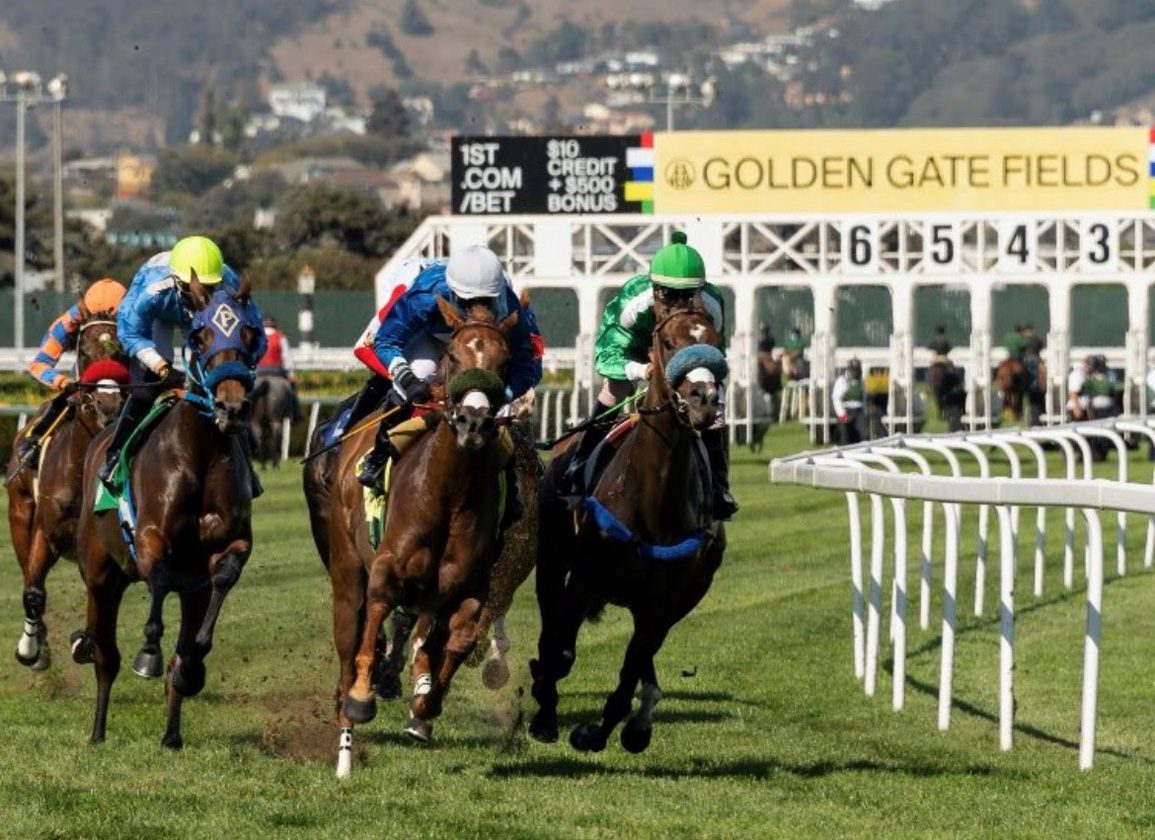By Dan Ross
California lawmakers Thursday passed legislation that means if Golden Gate Fields is not licensed to operate beyond July 1 next year, proceeds from simulcast wagering in the north are funneled south when there is no live racing in the northern half of the state after that date.
The rule of thumb is that proceeds from wagers made in the “northern zone” stay in Northern California to pay for purses and operational expenses, while the proceeds from wagers made in the “southern zone” stay in Southern California for the same purposes.
California Governor Gavin Newsom has until October 14 to sign or veto AB 1074, introduced by Assemblymember Juan Alanis (R-Modesto). The bill passed a concurrence vote in the state Assembly Thursday, after being passed off the Senate floor by unanimous vote the day prior.
“The swift passage of AB 1074 in the Senate and Assembly with consensus backing of the racing industry provides the short-term answers that we desperately needed and the framework for the future,” wrote Thoroughbred Owners of California (TOC) president and CEO, Bill Nader, in a statement Thursday. “This was critically important to our constituents to know that Golden Gate Fields is still in play to June of next year.”
The Stronach Group (TSG), which owns and operates Golden Gate Fields, announced in July that it was closing the Bay Area facility at the end of December with the goal of increasing field size and adding another day of racing a week at Santa Anita.
If TSG applies for dates to operate a live meet at Golden Gate during the first half of 2024, such a proposal would first need approval by the California Horse Racing Board (CHRB). The next CHRB meeting is scheduled for Sept. 21.
In terms of simulcasting proceeds, the state is broken into three main geographical zones–the “Southern,” “Central” and “Northern” zones.
Largely speaking, the south and central zones are rolled into one big “southern zone,” roughly spanning the northern tip of San Luis Obispo County down to the Mexico border. The “northern zone” consists of the remaining counties in the state.
The monies generated from simulcasting wagering are used for a variety of operational expenses besides purses, including payments to the California Horse Racing Board (CHRB) and the Horseracing Integrity and Safety Authority (HISA), the backstretch retirement fund and workers' compensation.
According to a legislative analysis of the bill, Golden Gate Fields handled over $524 million in 2022, which generated approximately $25 million in track commissions and purse funds.
The bill states that, “notwithstanding any other law, if the board does not license a thoroughbred race meet to be conducted by a racing association at a racetrack located in the cities of Berkeley and Albany after July 1, 2024, a thoroughbred racing association, or racing fair, in the southern or central zone licensed by the board to conduct a thoroughbred race meet or fair meet shall, during racing weeks not allocated by the board for a race meet in the northern zone, be deemed to be operating in the northern zone for the purpose of conducting all permissible forms of wagering in the northern zone pursuant to this chapter and making and receiving required distributions from those wagers in accordance with this chapter.”
Initially, various stakeholders in Northern California–including representatives of the California Authority of Racing Fairs (CARF) —had voiced reservations about altering the system by which simulcast wagering proceeds are allocated.
CARF executive director, Larry Swartzlander, told the TDN last weekend that the legislative amendment was drafted by CARF in agreement with TSG, on the proviso that Golden Gate Fields remains open for racing an extra six months.
Next year's racing calendar in Northern California is, of course, still to be decided. Last weekend, Swartzlander floated a plan that if Golden Gate Fields remains open until mid-2024, Santa Rosa would stage a Thoroughbred meet from mid-October–when the Fresno fair meet ends–until the end of the year.
The 2025 Northern California Thoroughbred racing calendar, Swartzlander added, could still hinge around a permanent base at Cal Expo. Such a plan would apparently require reaching an agreement with California's harness racing industry, which only last year extended its lease of operations of the Cal Expo Harness racetrack until May 2030.
Swartzlander also suggested the permanent bases of any extended 2025 Thoroughbred racing calendar in the north could be split between Cal Expo and Santa Rosa.
“Negotiations are continuing,” Swartzlander had told the TDN. “We'll work with them [WatchandWager Cal Expo] to come up with a solution. Whether we end up with a 50-50 split between Cal Expo and Santa Rosa, or whether we end up relocating Harness to another track, there's several options.”
Not a subscriber? Click here to sign up for the daily PDF or alerts.






